What Size Yoni Egg is Your Best Fit? A Complete Guide
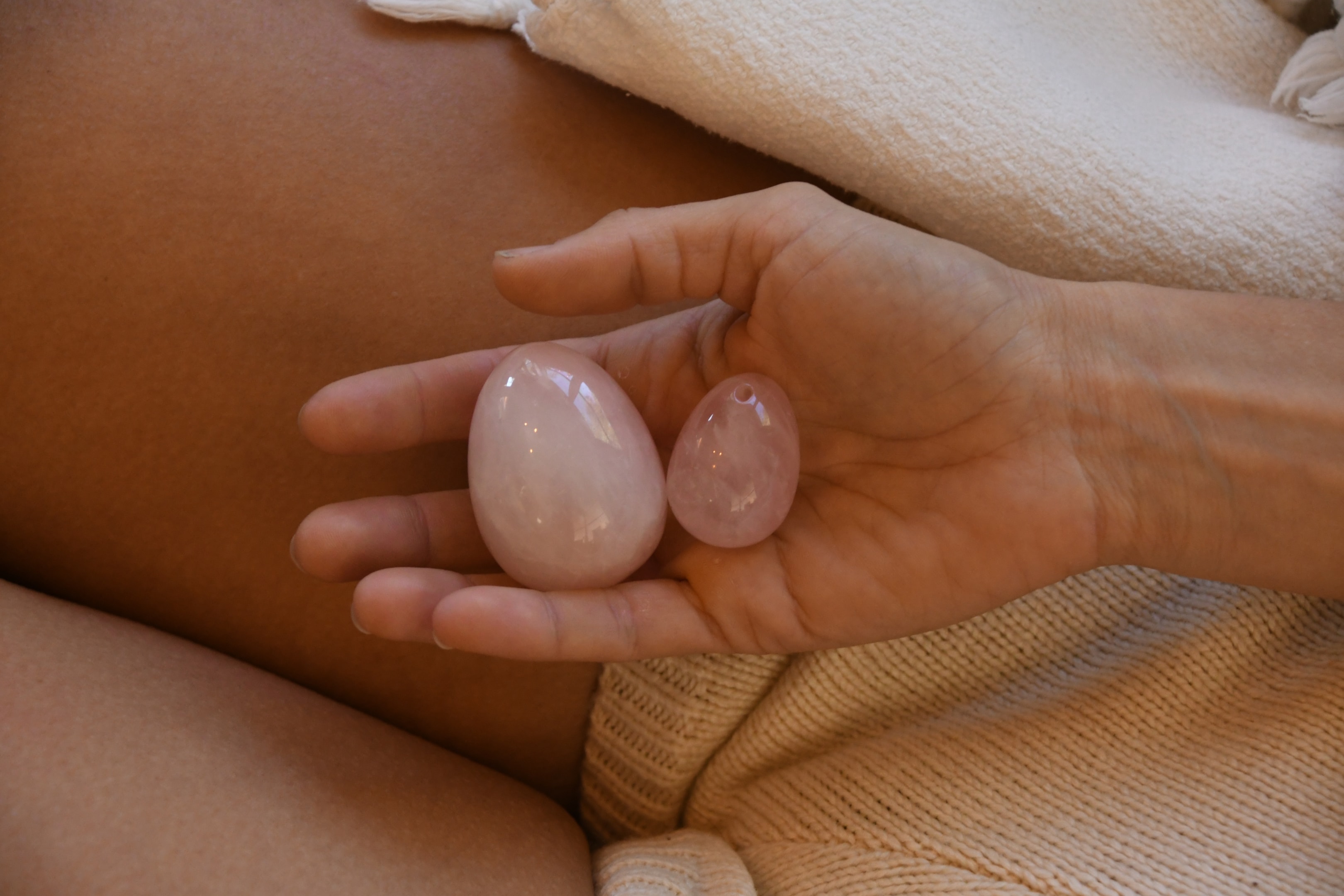
Table of Contents
Yoni eggs usually come in three sizes: small, medium, and large. The egg you need depends on different factors, and using the wrong size can make the practice ineffective. I used to use the wrong size myself, the egg was too big and it made the practice uncomfortable for me.
In this guide, I explain what size yoni egg you need, how each size works, and how to choose the one that will actually support your body.
Understanding Yoni Egg Sizes
A large egg is about 50 x 38 mm, medium about 43 x 30 mm, and small about 35 x 25 mm. Different crystal shops sometimes label them a little differently, so it’s always worth checking the exact measurements before you buy.
Large eggs are easier to notice and hold onto. For most women starting out, or for anyone rebuilding tone after childbirth or during early menopause, a larger egg gives your muscles something solid to grip. Medium eggs are the ones most women end up using long-term. They sit right in the middle and are a good mix of comfort and challenge. Small eggs demand more strength and control from your pelvic floor, and they’re usually best once you’ve already built muscle awareness with the bigger sizes.
There’s also the choice between drilled and undrilled. A drilled egg has a tiny hole so you can thread a string through it. That makes removal simple and gives peace of mind when you’re new.
How Size Impacts Yoni Egg Practice
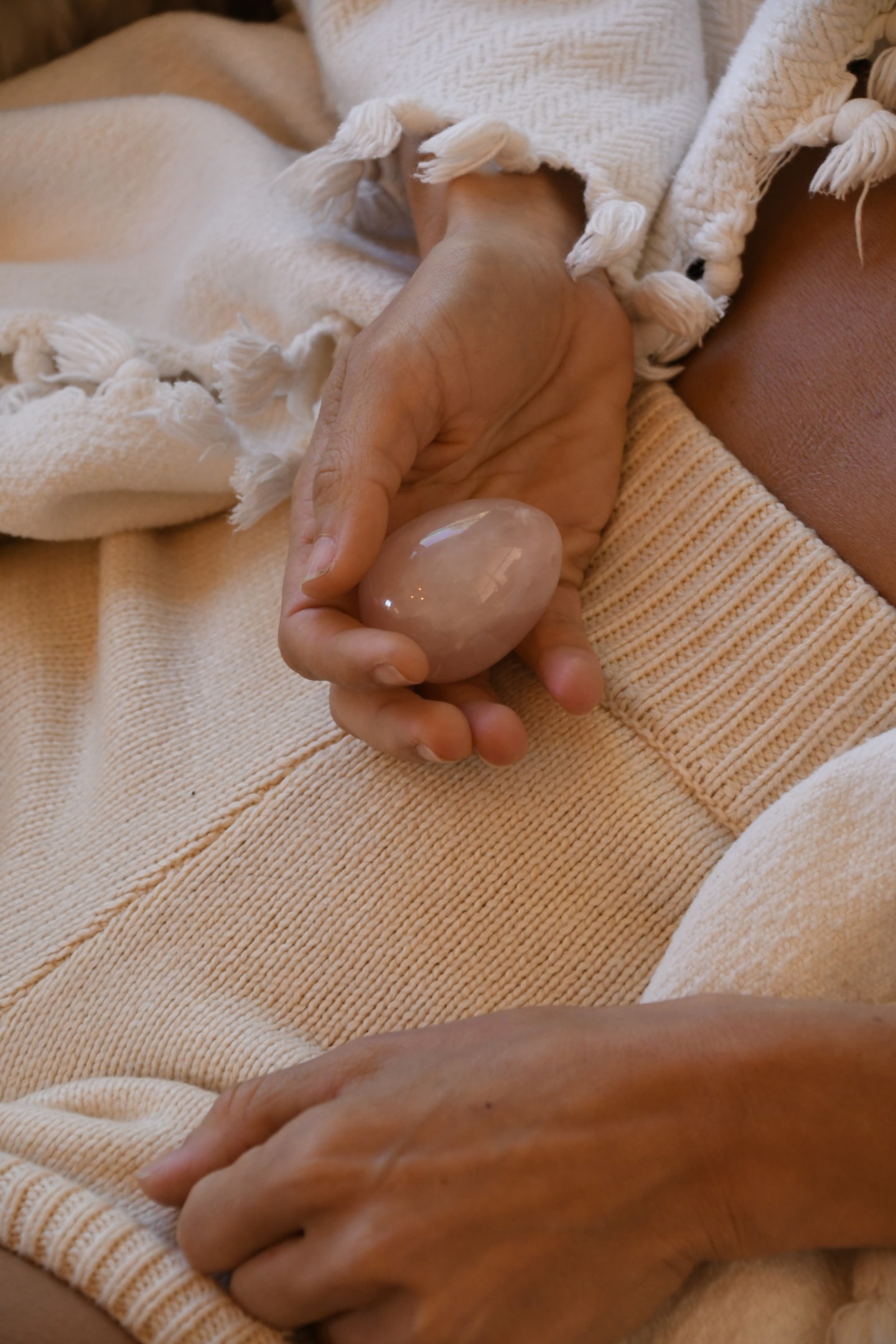
The size of your yoni egg shapes how your muscles respond to it. A larger egg takes up more space, which makes it easier for your pelvic floor to detect and contract around. A smaller egg is harder to feel, it demands more strength and awareness, almost like it becomes “invisible” until your muscles are toned enough to find it.
This is why most beginners do better with a medium or large egg. The presence of the egg helps you locate your pelvic floor, and it reduces the common fear of “losing” the egg inside. The extra size creates a sense of security and often makes early practice feel easier and more encouraging. Starting with a small egg, on the other hand, can leave you frustrated. If your muscles can’t catch it, you might feel like nothing is happening.
As your pelvic strength improves, you may decide to move down in size. Switching to a smaller egg challenges your control and builds awareness of more subtle sensations.
How to Choose the Right Size for Your Body and Stage
|
Size |
Who It’s For |
Pelvic Floor / Health Factors |
Anatomy Considerations |
|---|---|---|---|
|
Large (50 x 38 mm) |
Beginners, women rebuilding tone |
Ideal after childbirth or with weakened muscles |
Works well for taller or long-waisted women who need more presence internally |
|
Medium (43 x 30 mm) |
Most women; most popular starting point |
Suitable for women with “average” pelvic tone, no major concerns, or those ready for a blend of strength and comfort |
Fits well for average anatomy, adaptable for both petite and taller women |
|
Small (35 x 25 mm) |
Advanced users with strong pelvic floor |
Best for women with high tone, strong muscle control, or after training with larger eggs |
Often preferred by petite or women with naturally tight muscles |
Progression: Changing Sizes and Evolving Your Yoni Egg Practice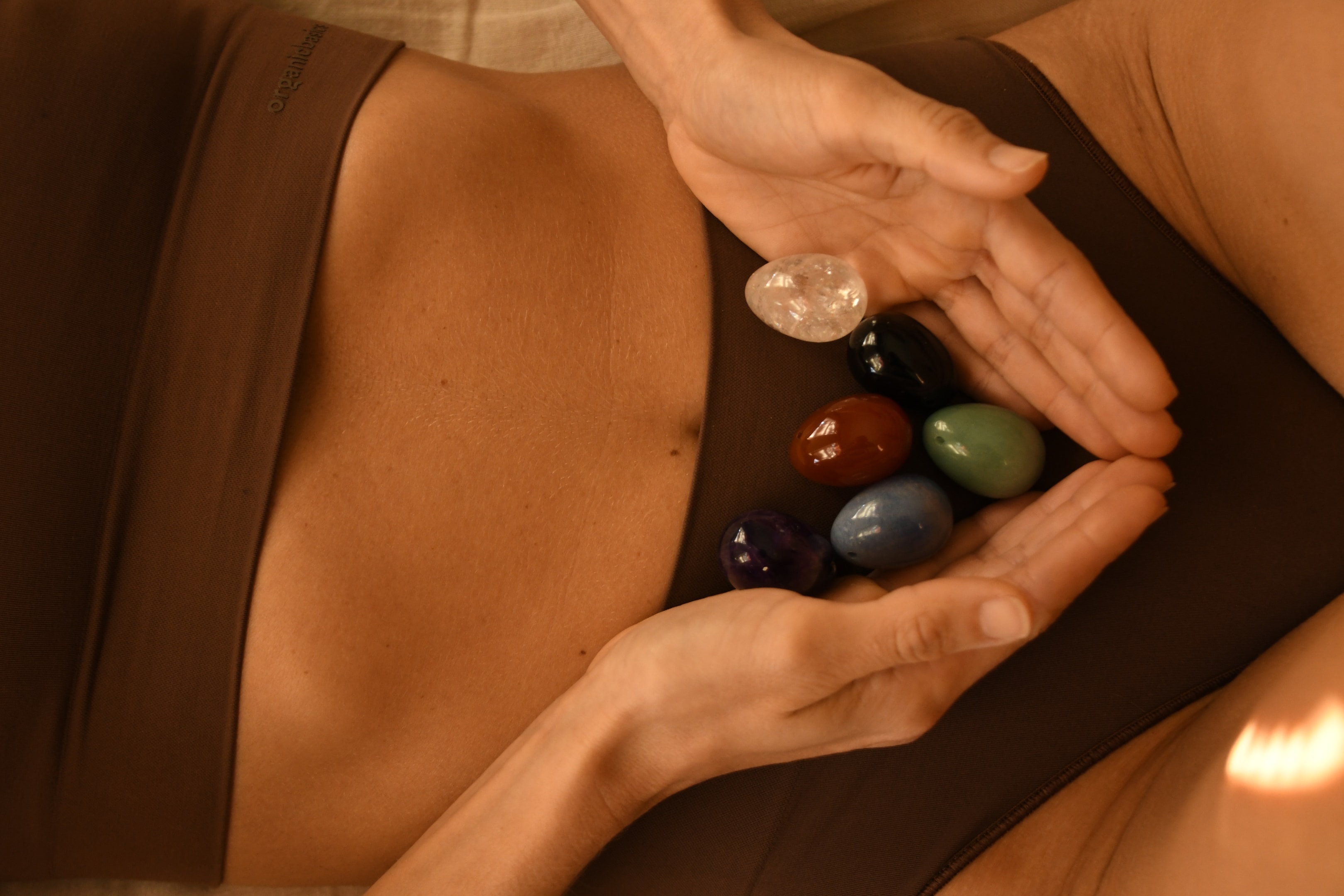
-
Choose a starting size based on your body today.
If your pelvic floor feels healthy, begin with a medium egg for a clear balance of sensation and control. If you’re postpartum, in early menopause, or notice low tone, begin with a large yoni egg so your pelvic floor can easily detect and contract around it. If you’re very petite with naturally high tone, consider a slender medium rather than jumping straight to a small egg.
-
Stage 1 - Orientation (2–3 weeks).
Practice 3–4 times per week for 10–15 minutes. Start lying down, then progress to standing once you can hold the egg without clenching your glutes or holding your breath. If you’re new, a drilled egg with string reduces anxiety and helps you focus on pelvic floor engagement instead of removal.
-
Check the fit early.
Right size signs are you can feel the egg’s presence, you can gently “catch” it during a squeeze, and it stays in while standing. Wrong size signs: it keeps slipping out, you feel nothing, or you brace with your abs/glutes. If it’s slipping or “invisible,” go up a size; if you feel strain or pressure, step down or pause.
-
Build consistent control before progressing.
Aim for:
-
Ten slow squeezes (5-second squeeze, 5-second release) without breath-holding.
-
Ten gentle “lifts” (drawing the egg upward on an exhale, fully releasing on the inhale).
-
Ability to hold the egg during a light cough or a shallow squat without bearing down.
-
Stage 2 - Strength & endurance (2–6 weeks).
Keep sessions at 10–20 minutes, 3–4 times weekly. Add walk-about practice at home once you can hold the egg standing without compensations. Your cue to advance isn’t time; it’s quality—clean squeezes, full releases, and comfort.
-
Readiness test for a smaller size.
You’re ready to try a small egg when you can:
-
Hold a medium egg easily while standing and moving around the room.
-
Perform 10 clean lifts with full release and no glute or ab bracing.
-
Insert and remove with zero tension or soreness afterward.
-
Stage 3 - Transition to a small egg (precision phase).
Return to shorter sessions (8–12 minutes). The small egg demands proprioception. Focus on “catch-and-lift” control, quick flicks (1-second squeeze, 2-second release x 10), and full down-regulation between efforts. If the egg feels “invisible,” alternate days with your medium egg until sensation sharpens.
-
Alternate sizes as needed.
Use a large egg on days you feel looser and want stronger feedback. Choose a medium when you want steady strength work. Reach for a small when you want subtle precision. Switching sizes keeps your yoni egg practice responsive instead of forced.
-
When to step back.
If you notice pelvic fatigue, pressure, urinary urgency, pain, or habitual breath-holding, reduce intensity: shorten sessions, add more rest between squeezes, or return to a larger egg for clearer feedback.
Frequently Asked Questions
Yes, when used correctly, yoni egg practice helps strengthen the pelvic floor muscles through exercises that involve squeezing, lifting, and holding the egg inside. Most women notice that a medium sized egg or larger egg is easiest to start with, because the pelvic muscles can detect it and contract around it. Over time, these yoni egg exercises improve tone and blood flow in the female reproductive system, which can create the sensation of being “tighter.”
Yoni eggs are carved from beautiful and exotic gemstones, and each carries unique qualities. Nephrite Jade is the most popular yoni egg and has been used in Taoist teachings for centuries. It’s a very protective stone that shields the female physical body, supports the root chakra, and is considered a very healing stone because nephrite jade energetically balances the entire organism. Rose Quartz corresponds strongly to the heart chakra and is often called the love stone, it’s used when a woman intuitively wants softness, self-compassion, or to release emotions stored in the body. Black Obsidian is another protective stone, valued for how it transmutes negative energy and cuts through stored tension.
For beginners, it’s best to use a yoni egg for short sessions, about 10 to 20 minutes while doing gentle pelvic floor exercises. Over time, most women feel comfortable wearing their jade egg or medium egg for longer periods, even up to a few hours, but there’s no need to wear it for long periods of time. Keeping an egg inside overnight is not recommended. Always listen to your own body. If the egg feels heavy, causes tension, or creates discomfort, remove it. Remember that safety and healing benefits come from intentional use, not from wearing it for the longest time possible.
It’s completely normal for your first yoni egg to slip out, especially in the beginning. This usually means your pelvic floor muscles are still building strength and awareness. Most women start with a larger egg or medium yoni eggs so the muscles can grip more easily. A small egg requires much stronger control, so it may fall out quickly if used too soon. If your egg keeps slipping, try lying down for practice at first, or thread a string through a drilled egg for easier control. Over time, with practice and patience, your pelvic floor will strengthen, and your body will naturally hold the egg inside.





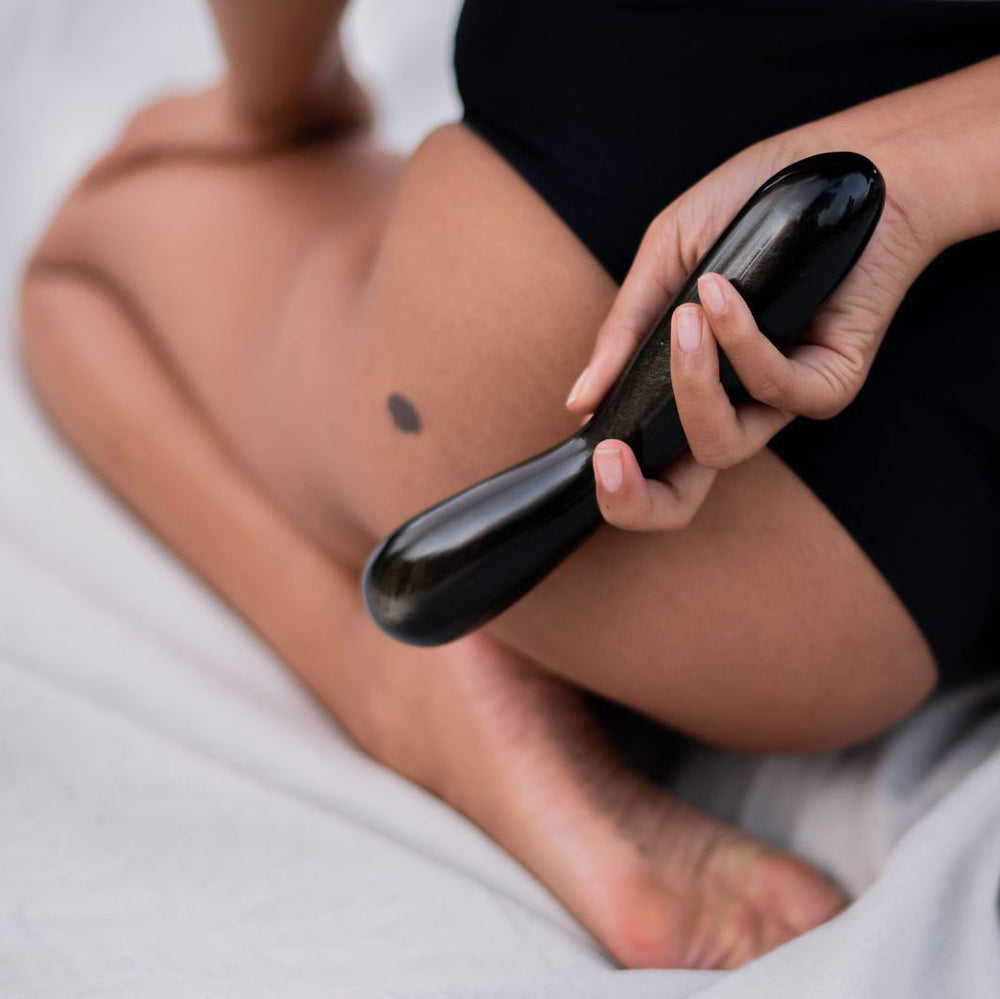
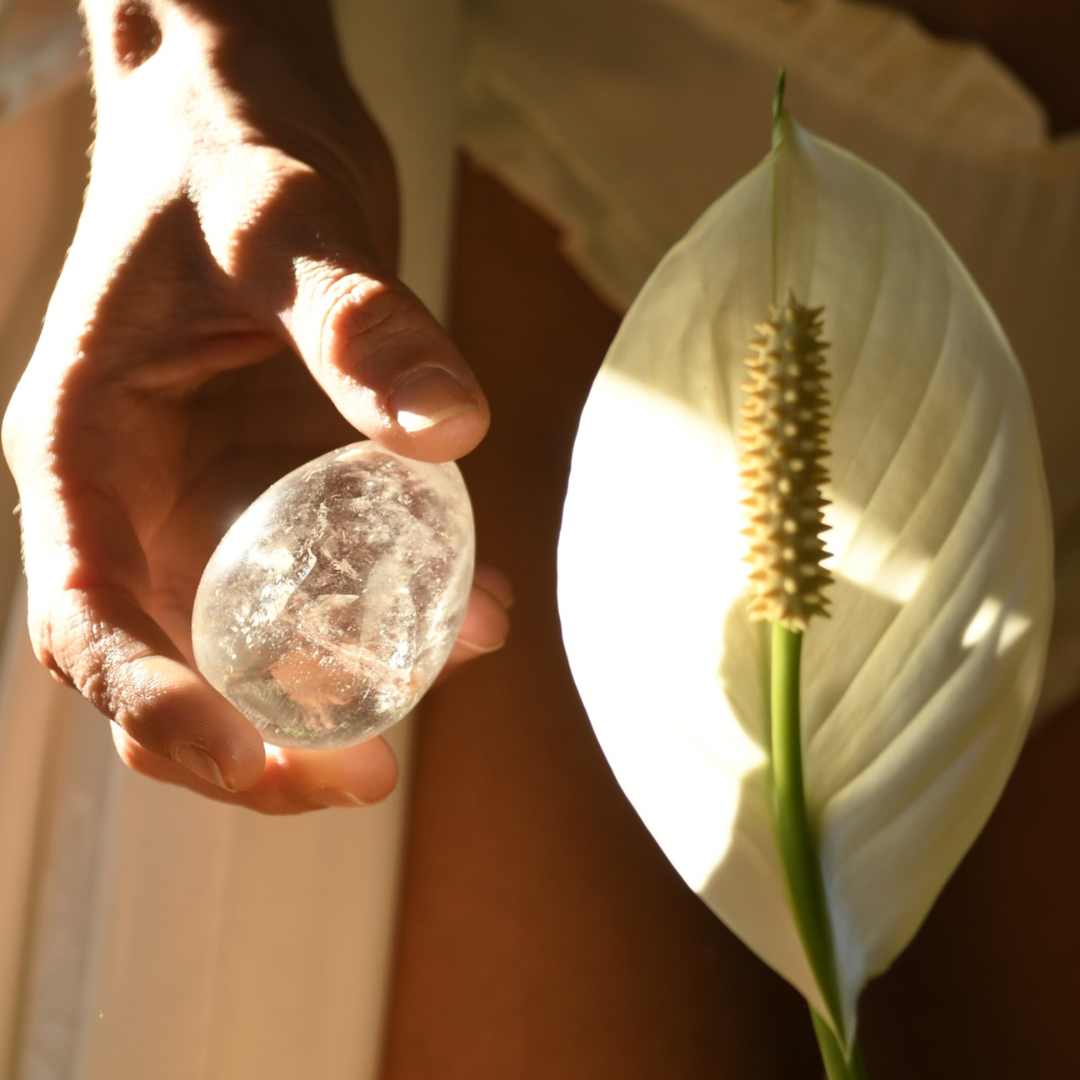

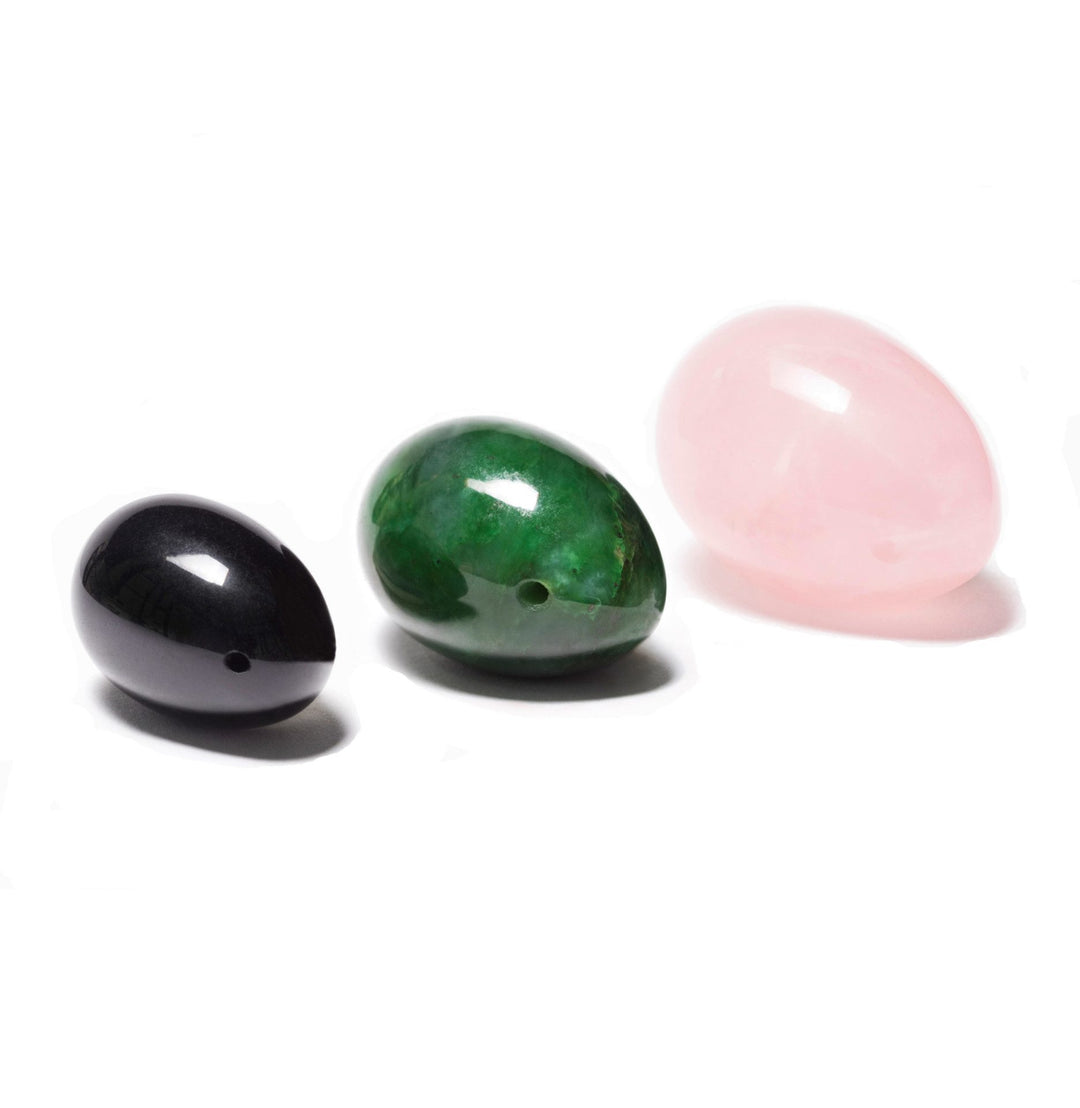
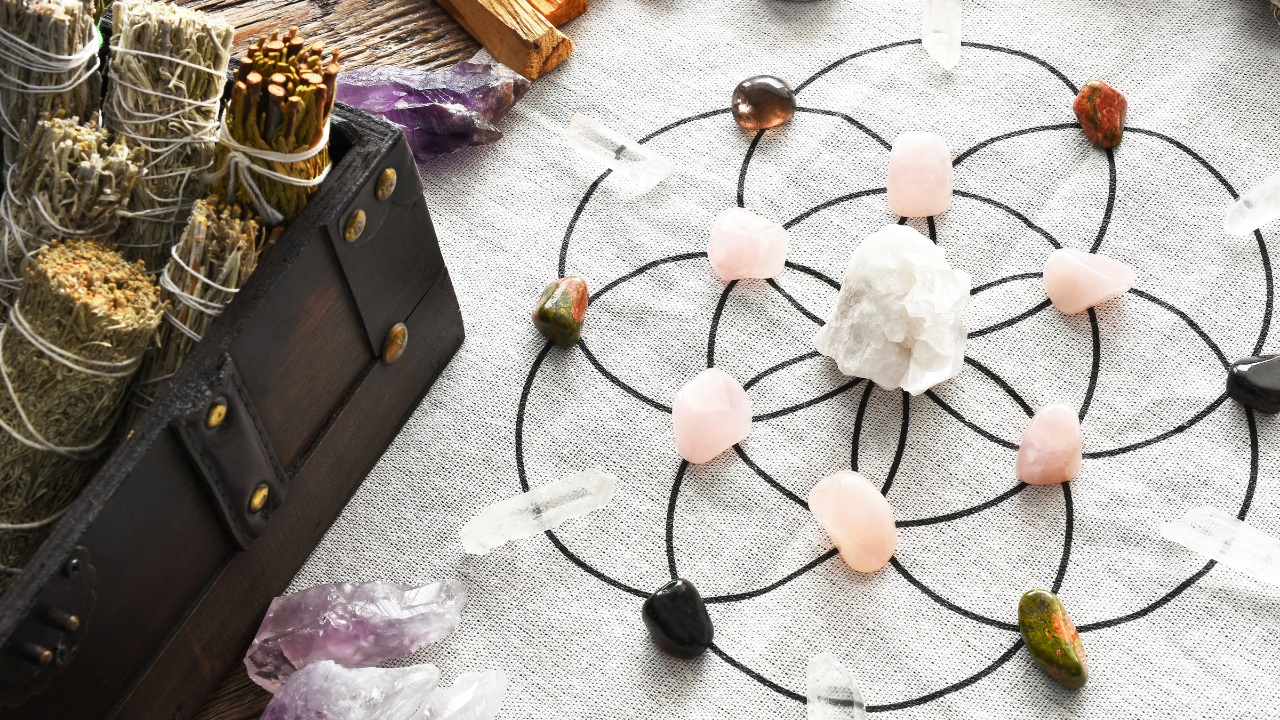
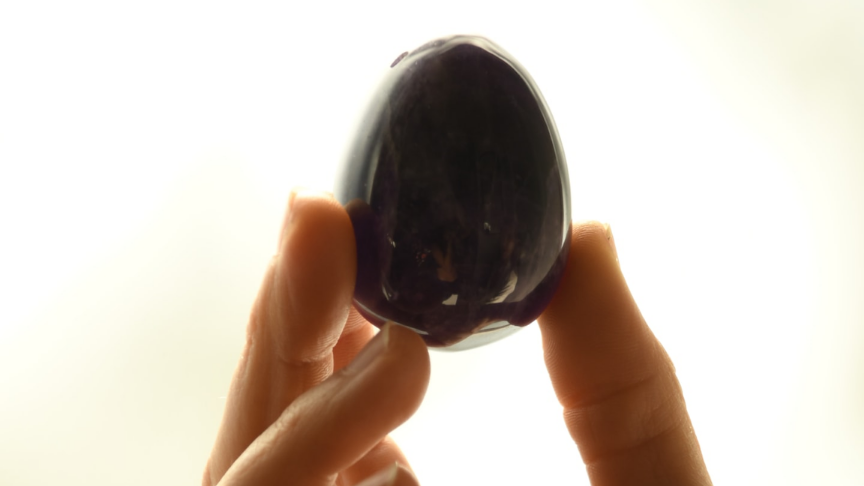
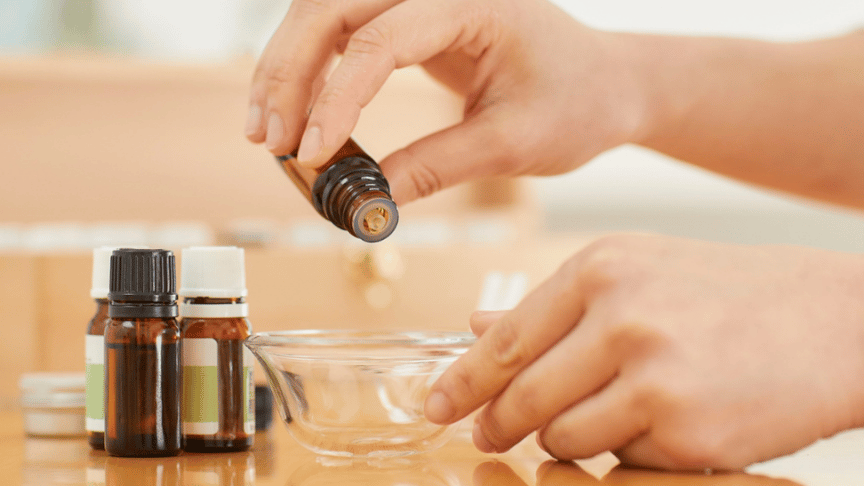

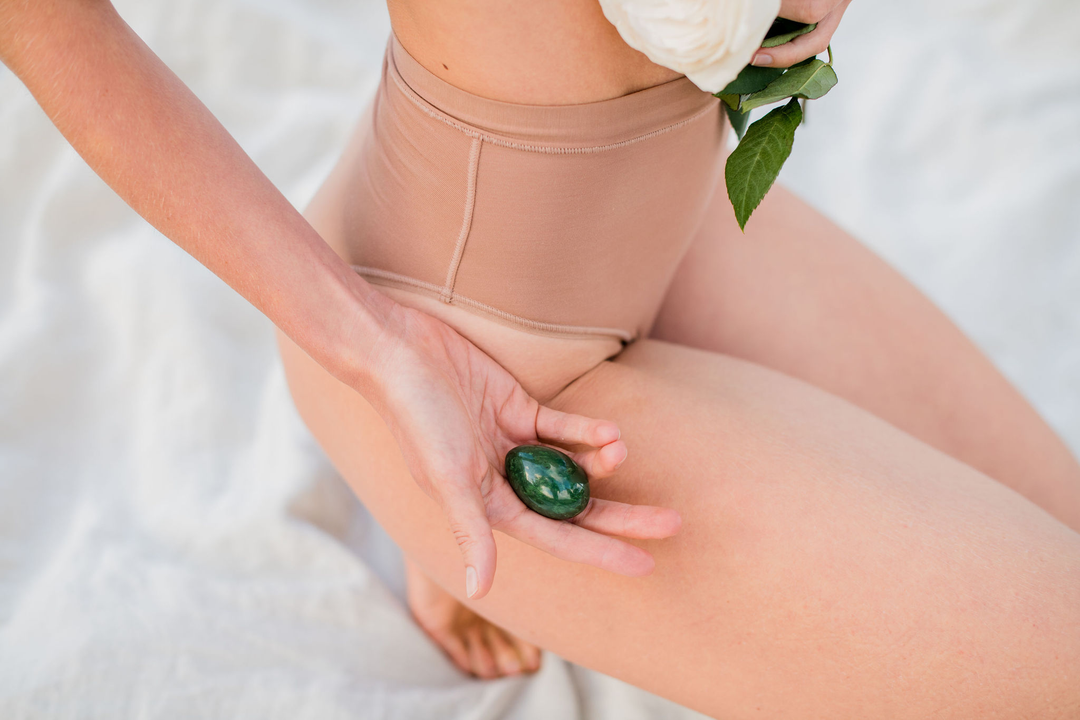
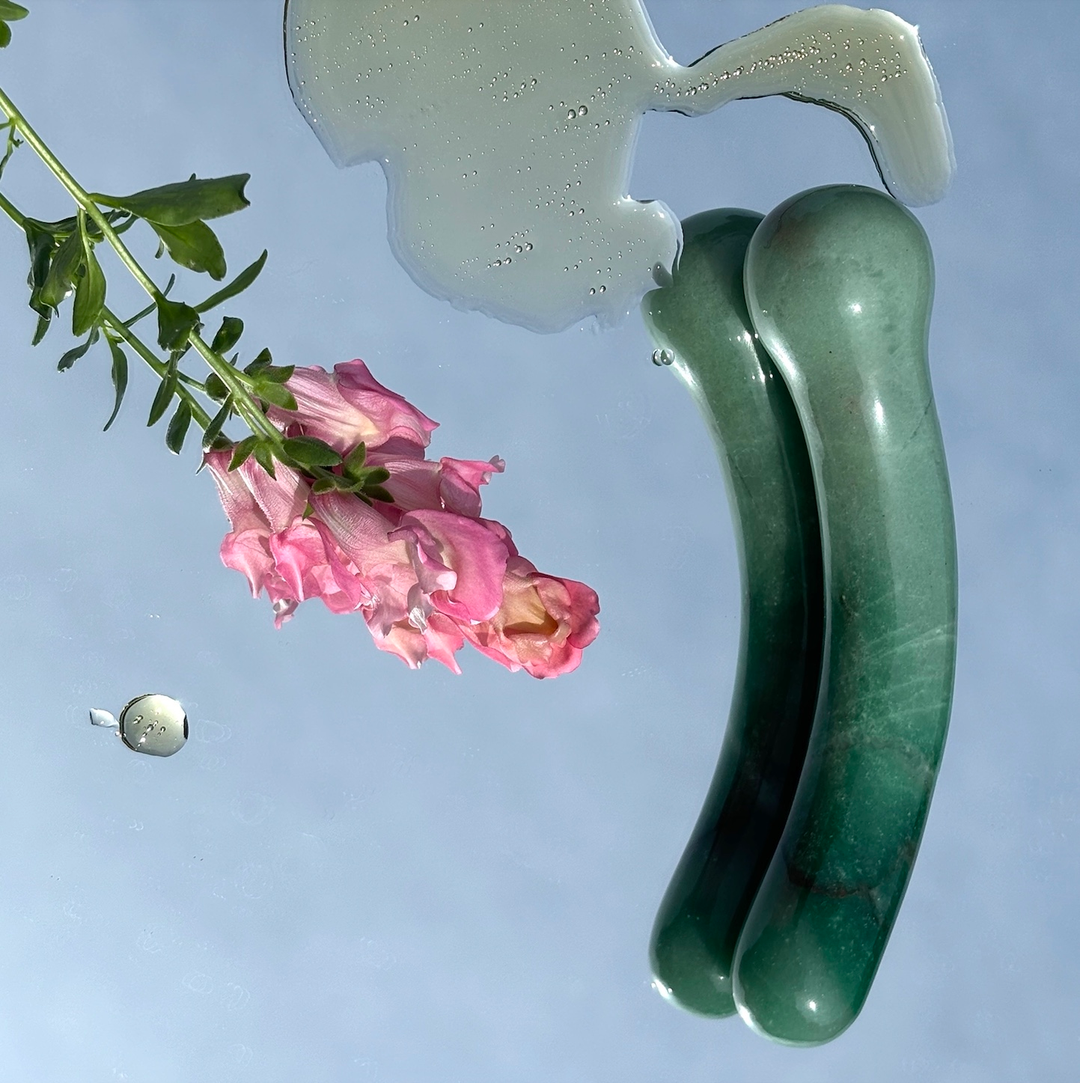
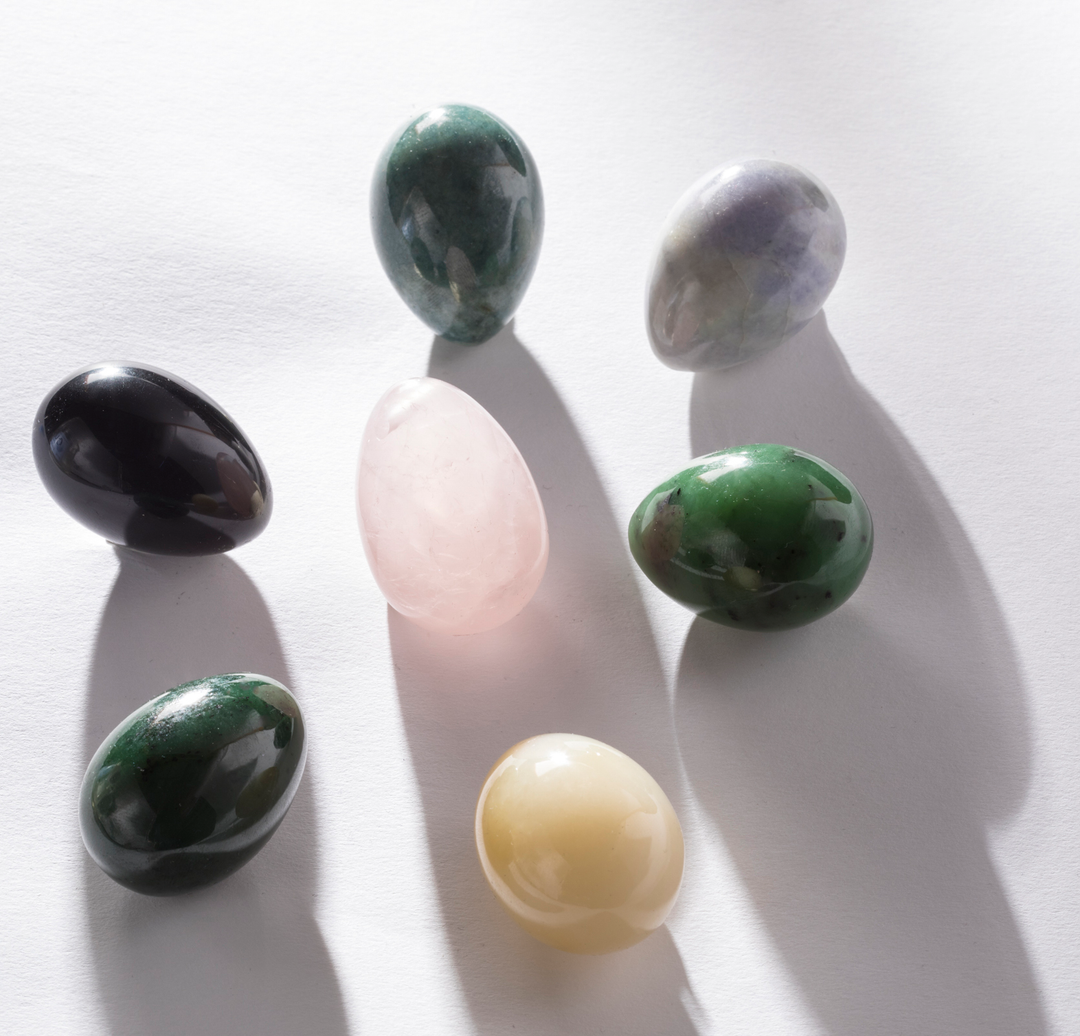
Leave a comment